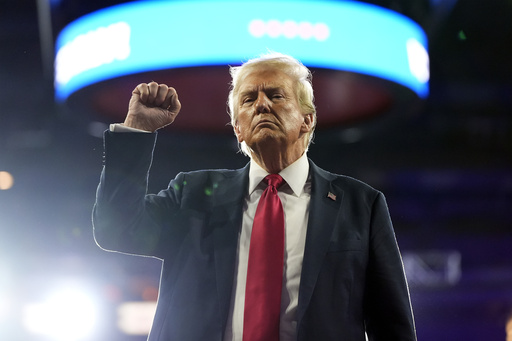
ATLANTIC CITY, N.J. — The recent election of Donald Trump has stirred intense speculation regarding the future of offshore wind energy projects in the U.S. Many opponents of the industry anticipate that Trump will take immediate action to dismantle it when he resumes the presidency. However, the path to doing so may not be straightforward.
Some of the prominent companies involved in offshore wind development are projecting confidence despite the election outcome. They express willingness to collaborate with Trump and Congress to advance their energy initiatives, seemingly disregarding Trump’s vocal opposition to their projects witnessed throughout his campaign.
In various speeches during his campaign, Trump strongly criticized offshore wind, asserting he would sign an executive order to halt such developments on his first day back in office. “We are going to make sure that that ends on Day 1,” he asserted in May. He dubbed offshore wind energy as detrimental, arguing that it is overly expensive and harmful to the environment.
Despite Trump’s claims linking offshore wind preparations to an uptick in whale deaths along the East Coast, numerous federal and state scientific agencies refute this, asserting that no credible evidence supports his assertions. While offshore turbines have been acknowledged to impact shorebirds, industry representatives emphasize existing policies aimed at minimizing environmental disruption.
Trump has also criticized the visual impact of offshore wind turbines, particularly in relation to a golf course he owns in Scotland. Observers, including environmental advocates, argue that his significant ties to the fossil fuel industry serve as a more convincing motive behind his opposition to offshore wind energy.
Currently, there are nearly 65 gigawatts of offshore wind capacity being developed within the U.S., sufficient to provide energy for over 26 million households, as reported by the American Clean Power Association. Already operational projects include Rhode Island’s Block Island Wind Farm, the Coastal Virginia Offshore Wind pilot project, and the South Fork Wind Farm situated about 35 miles off Long Island’s Montauk Point.
While Trump is not expected to terminate existing projects, he might exert influence over those still in the planning stages, according to industry analysts. Bob Stern, who formerly managed an environmental protection office in the U.S. Energy Department, suggested that Trump could persuade Congress to diminish or eliminate the tax credits for offshore wind which were introduced under the Biden administration’s Inflation Reduction Act. Such credits are crucial for the financial viability of many offshore wind initiatives.
Stern, also the head of the New Jersey-based group Save LBI, indicated that Trump could issue executive orders to halt new offshore leases and revoke existing approvals, all while advocating for laws that enhance protections for marine life.
Opponents of offshore wind, a significant number of whom are Republicans, expressed excitement following the election, anticipating an end to the industry. Robin Shaffer, president of Protect Our Coast NJ, remarked, “I believe this is a tipping point for the offshore wind industry in America,” referring to the long-standing support that the industry has enjoyed from Democratic leadership.
Nevertheless, others, like Tina Zappile from Stockton University, noted that even during Trump’s tenure, previous officials such as Interior Secretary Ryan Zinke showed support for offshore wind initiatives. She suggested that while Trump’s administration may pose challenges for the industry, it is unlikely to eradicate it entirely.
Commercial fishermen in Maine expressed hope that the Trump administration might roll back policies that facilitate offshore wind project approvals. Jerry Leeman, CEO of the New England Fishermen’s Stewardship Association, urged Trump to relinquish his commitment towards deploying 30 gigawatts of offshore wind capacity by 2030.
On the other hand, the offshore wind industry maintains an optimistic outlook, promising to engage collaboratively with Trump and his allies. Stakeholders, including various wind industry groups and developers, emphasized themes that resonate with Republicans, such as job creation and economic enhancement.
“The Trump administration can advance a dynamic, secure, and clean economy by leveraging all domestic energy resources,” stated Jason Grumet, CEO of the American Clean Power Association, highlighting his group’s eagerness to collaborate with the incoming administration and Congress to further their objectives.
Yet, the general sentiment among many Republicans post-election has been less than encouraging for the offshore wind sector. New Jersey Assemblyman Paul Kanitra publicly urged major offshore wind companies to withdraw from the area, predicting steep declines in their stock values, which have indeed begun to drop in reaction to the election results. The stock prices of various European offshore wind firms saw significant declines, with Orsted and Vestas Wind Systems experiencing notable downturns.
Rep. Jeff Van Drew, a Republican from New Jersey, reiterated his support for Trump’s anti-offshore wind stance, emphasizing the expected consequences for local communities. “We are currently working out the specifics of what that will look like once he takes office again this January,” Van Drew remarked, indicating the extent of collaboration expected between Trump and local officials regarding offshore wind projects.
